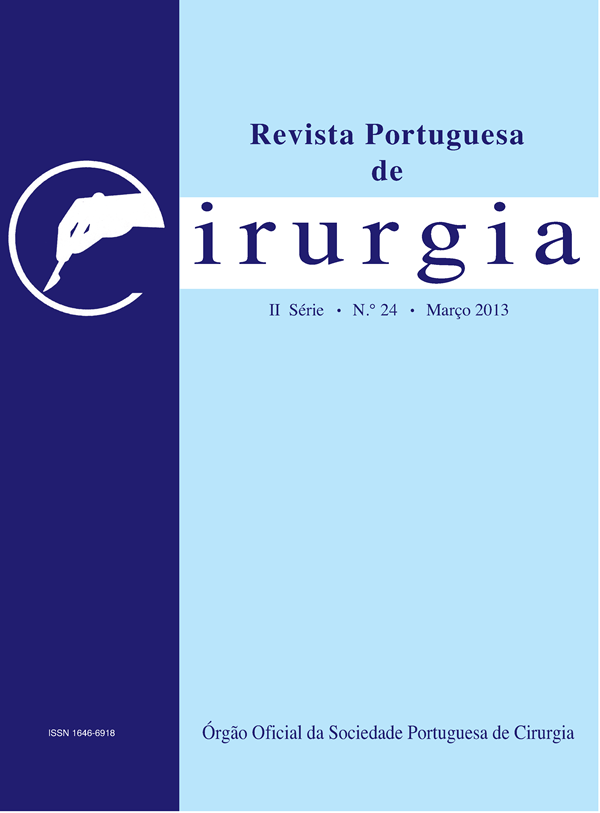Assessment of surgical risk in colo-rectal cancer patients: POSSUM or ACPGBI?
Abstract
Introduction: Several models have been developed with the purpose of predicting surgical risk of patients submitted to colorectal cancer surgery. However, to date, there isn’t any model that fulfills this purpose in a satisfactory manner.
Methods: We consulted the clinical processes of 345 patients, who were submitted to surgical colorectal cancer treatment at the General Surgery department in Hospital de Braga, and calculated surgical risk based on the following risk assessment scales: Physiological and Operative Seve- rity Score for the enumeration of Mortality and Morbidity (POSSUM), Portsmouth POSSUM (P-POSSUM), ColoRectal POSSUM (CR-POSSUM), Association of Coloproctology of Great Britain and Ireland (ACPGBI) and modified ACPGBI. For all scales, we com- pared observed and previewed mortality and calculated Receiver Operating Characteristic (ROC) curve.
Results and conclusion: he study included 345 patients submitted to colorectal cancer surgery of which 211 were male and 126 were female, with an average age of 68 years old. Most patients (61,0%) presented with colon cancer and 86,4% were submitted to elective surgery. Post-operatory mortality at 30 days was 3,768%. In the present study, despite no model being statistically better than the other, the ACPGBI model was the one that showed more discriminative properties which, along with easier applicability, makes it the best model for evaluating surgical risk in our population.
Keywords: colorectal cancer, POSSUM, P-POSSUM, CR-POSSUM, ACPGBI
Downloads
Published
Issue
Section
License
Para permitir ao editor a disseminação do trabalho do(s) autor(es) na sua máxima extensão, o(s) autor(es) deverá(ão) assinar uma Declaração de Cedência dos Direitos de Propriedade (Copyright). O acordo de transferência, (Transfer Agreement), transfere a propriedade do artigo do(s) autor(es) para a Sociedade Portuguesa de Cirurgia.
Se o artigo contiver extractos (incluindo ilustrações) de, ou for baseado no todo ou em parte em outros trabalhos com copyright (incluindo, para evitar dúvidas, material de fontes online ou de intranet), o(s) autor(es) tem(êm) de obter, dos proprietários dos respectivos copyrights, autorização escrita para reprodução desses extractos do(s) artigo(s) em todos os territórios e edições e em todos os meios de expressão e línguas. Todas os formulários de autorização devem ser fornecidos aos editores quando da entrega do artigo.



